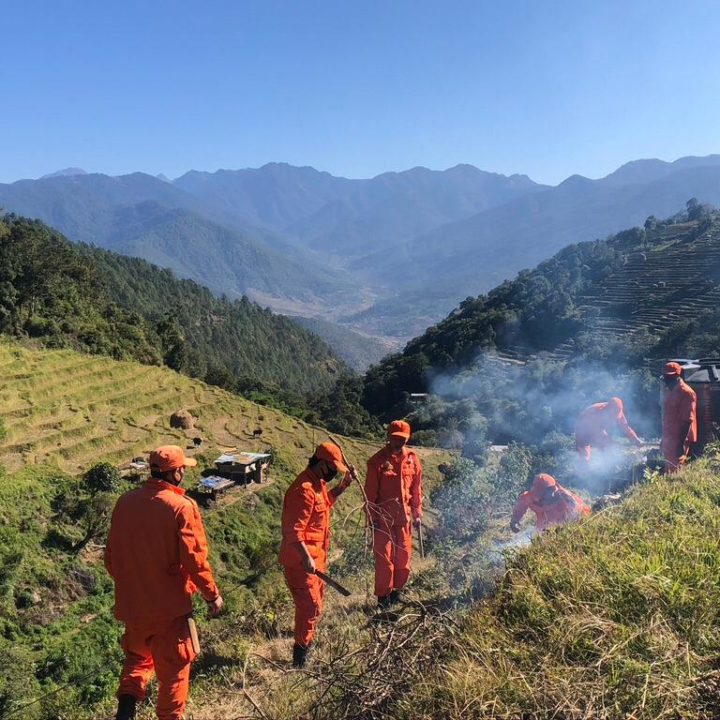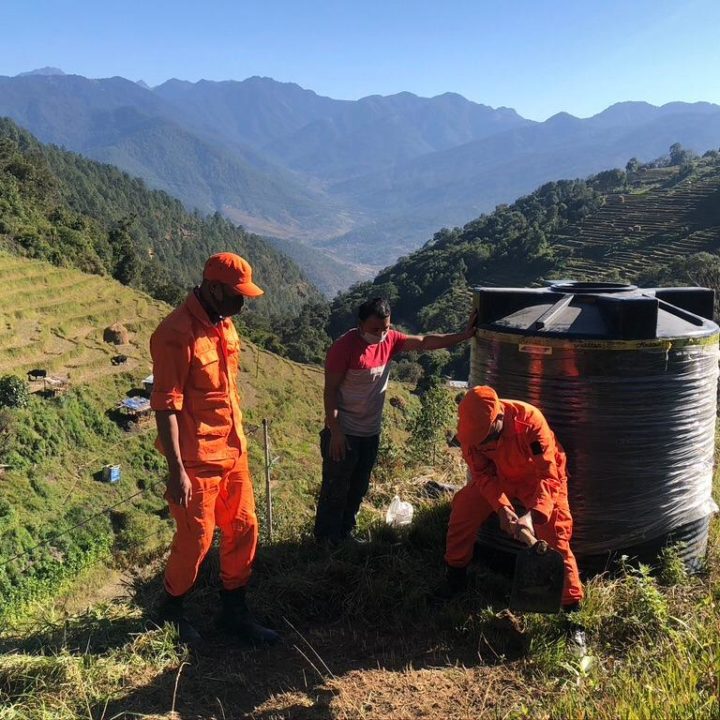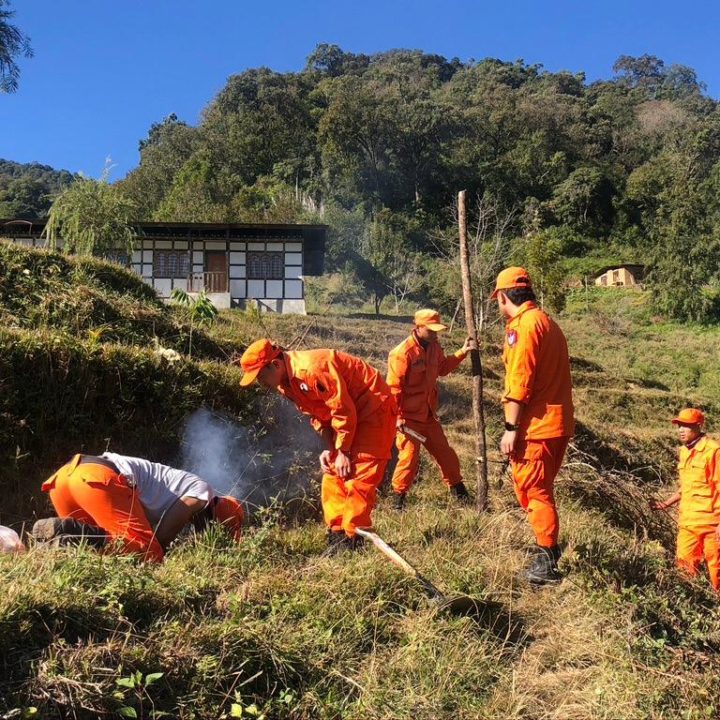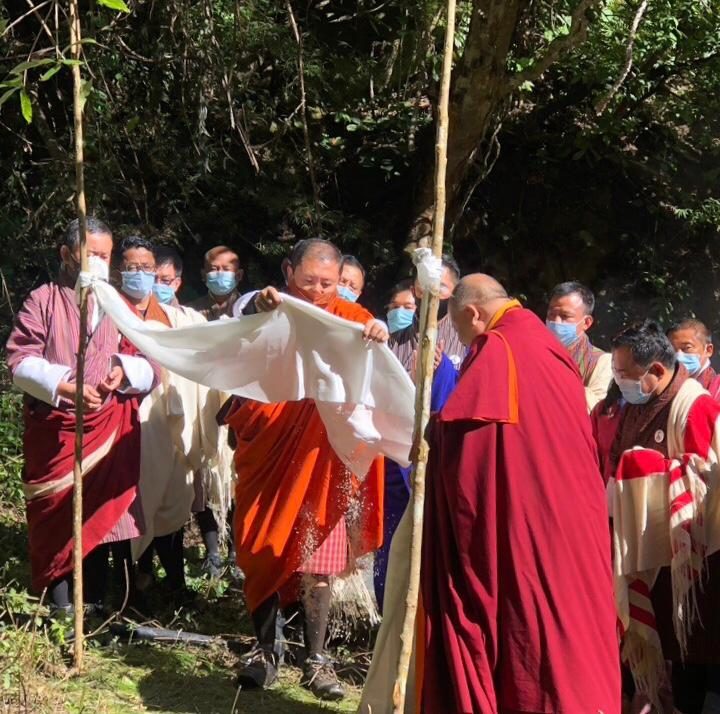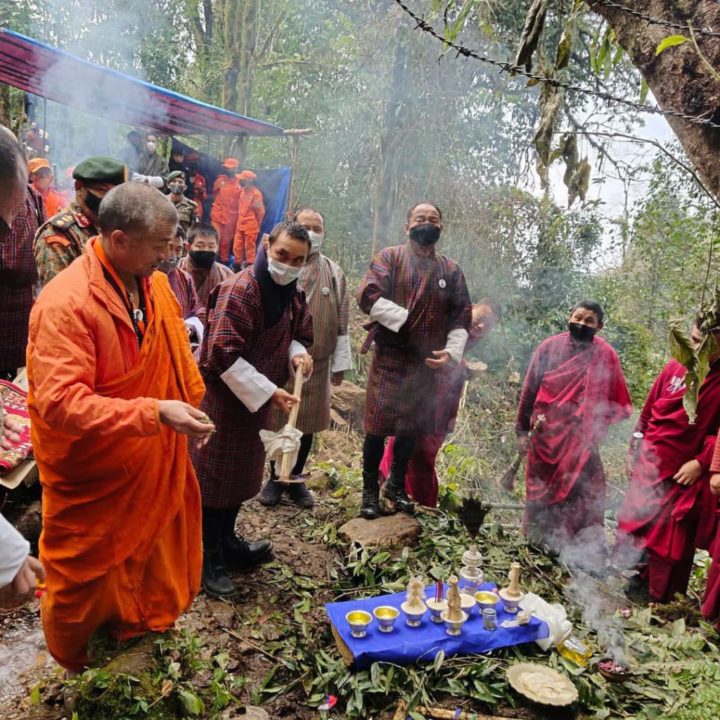Bhutan’s vulnerability to Disasters
Geo-physically Bhutan lies in one of the most seismically active zones in the world. Records suggest that while four great earthquakes of magnitude exceeding 8 on the Richter scale had occurred in 1897, 1905, 1934 and 1950 another 10 earthquakes exceeding magnitude 7.5 occurred in the Himalayan belt during the past 100 years. The most recent earthquakes are of 1980 ( 6.1 on Richter scale), 1988(6.1 on Richter scale),2003( 5.5 on Richter scale), February 2006( 5.8 and 5.5 on Richter scale) and 21 September 2009 (6.1 on Richter scale). The September 2009 earthquake caused damages to Dzongs, Lhakhangs, chortens, rural homes, government properties mainly in the 6 eastern Dzongkhags. The most recent earthquake of 18th September 2011 also caused major damages in the country particularly in the western Ddzongkhags of Chukha, Haa, Paro and Samtse. Many rural houses, schools and other government properties worth million were destroyed.
GLOFs( Glacier Lake Outburst Floods) are among the most serious natural hazards that the country faces today. While there are no written records of the 1957 and 1960 GLOFs the 1994 GLOF caused damages to more than 1,700 acres of agricultural and pasture lands and a dozen houses, washed away five water mills and 16 yaks, and destroyed 6 tons of food grains. A recent study carried out by the DGM and the ICIMOD had identified 24 glacial lakes as potentially dangerous. Future threats are likely to affect regions that fall within the Chamkharchu basin, Mangdechu basin, Kurichu basin, Mochu basin and the Phochu basin. These would not only threaten the lives and livelihoods of people living in these valleys but will also be equally hazardous to the industrial infrastructure such as the hydropower projects and the low lying bridges established down in the valleys.
Landslides and flash flood are recurrent phenomena in Bhutan causing severe annual damages during the monsoon. The most recent record of flash floods can be traced back to the heavy rains of 2000mm in the areas of Phuntsholing and Pasakha in 2000 where more than 200 people lost their properties. The 2004 flashfloods affected six eastern Dzongkhags where 9 lives were lost, 29 houses were completely washed away, 26 houses were completely collapsed, 107 houses were partially damaged, destroyed 664 acres of wet and dry land, hundreds of tons of maize, paddy and potatoes were lost, washed away 2000 orange trees. In total 1437 households were affected. The May 2009 “ cyclone AIia” completely washed away the Gasa hot springs and destroyed many agricultural land downstream.
Due to the country’s steep terrain, narrow river gorges, unstable physical structure and increasing incidences of landslides have led to the formation of artificial lakes and dams on the rivers. One good example is the formation of an artificial dam due to the rock slide on the Tsatichhu a tributary of Kurichu in September 2003. It posed serious threat to the Kurichu Hydro Power Project by forming an estimated volume of 33 million m3 within 0.3 km3 of the size of the dam body. Such hazards will continue to prevail in Bhutan placing many of our hydro power plants, farmlands, human settlements, social infrastructure and numerous properties of cultural, social, and historical significance that are located in the river valleys.
In the last decade there had been severe forest fire outbreaks. Every year thousands and thousands of hectares of forest were burnt down which have not only a huge impact on the environment and the livelihoods of the communities but remain a persistent threat to the houses, infrastructure, human life, wild life and the domestic animals. 25 houses burnt in Yangthang village in Haa ( 2002),5 houses burnt down in Zhapong, Trashiyangtse( Dec 2005),7 shops burnt down in Chamkhar, Bumthang ( Nov, 2005), the massive fire that broke out from the Dangme-Gamrichu confluence in Bartsham causing immense damage to properties in March 2006, 21 shops/houses burnt down in Wamrong in December 2009, 64 shops/houses burnt down in Chamkhar in October 2010 and another 28 shops/houses burnt down in Chamkhar town in Bumthang are grim reminders of human negligence and carelessness. Heavy use of wood in traditional buildings, dzongs, monasteries and other structures of historical significance make them vulnerable to fire.
Global warming and climate changes have resulted in extreme natural events such as dry weather, excessive rains, and other devastating natural calamities such as typhoons, floods, and droughts. While Bhutan has not experienced any large scale destructions due to such calamities strategies and policies that could address such immediate, medium and long term hazards must be put in place.
Challenges
Disaster risk management in the country is still at an infant and an evolution stage. Firstly, there is a huge resource crunch. Secondly, whatever resources available within the country are accorded to other high priority development plans. Thirdly, raising or mobilizing resources from other developmental partners or from outside is cumbersome and not forthcoming as well.
Technically also, majority of the people do not have either lesser degree of understanding of issues connected to disaster risk management, nor do they have the right technical skills to fight disasters. Coordinating multi-sectoral agencies together, as per past records, in times of emergencies have been not very easy and also not always very fruitful. More than anything else, there is a an acute shortage of skilled manpower to take up the challenge of search and rescue operations, relief operations, and rehabilitation and reconstruction works




